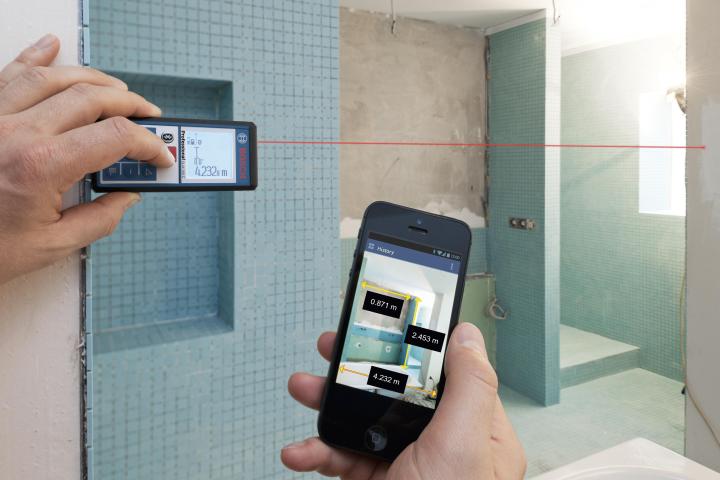
Still toiling away with a tape measure like some sort of carpentry-savvy caveman? It’s 2013 – get yourself a laser measure already. Not only are they faster, easier, and more accurate than tape, but some of the newer ones – like the GLM 100 C Professional from Bosch – can interface with your smartphone to do all kinds of nifty next-gen stuff.

But smartphone pairing – despite being the device’s big selling point – isn’t the only feature it’s got. Bosch outfitted this badboy with a shipload of different measurement modes, including: length, area, volume, angle, min/max, continuous, single indirect height, single indirect length, combined indirect height, and multi-surface area measurement. And with it’s built-in tilt sensor that gives it orientation awareness, you don’t even have to hold it straight to get an accurate reading. It’s easily one of the most versatile rangefinders you can buy.
The GLM 100 C Professional retails for $300, and is available both online and at physical retail locations.




